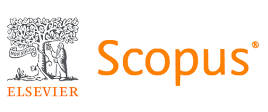Consumer’s Willingness to Pay for Organic Leaf Vegetables in Modern Markets in Bogor, Indonesia
Abstract
The research survey suggests that there are organic products that are often purchased by consumers such as vegetables, rice, seasonings, meat, tempe, milk, eggs, fruit, coffee, tofu and cooking oil. Vegetables are the most frequently purchased organic product at 23% (David & Ardiansyah, 2017). Consumer decisions in purchasing organic food products are influenced by the premium price and this is the main obstacle (Bryła, 2016). Research survey results show that 82% of consumers are unwilling to pay a premium price above 10-20% for organic food (Xie et al., 2015). The price range of organic products ranges from 6% to almost 300% higher than the price of inorganic products (Sörqvist et al., 2013). The price difference can affect consumers' willingness to pay. Based on this, it is necessary to research how much the value of willingness to pay is to be paid by people in the city of Bogor to pay for organic leaf vegetable products. The research was conducted in Bogor City and the location selection was done by purposive sampling. The independent variables studied were age, education, expenditure, gender, number of family members, marital status, health awareness and environmental awareness. The data source in this study uses primary data. Data collection time was conducted in April-June 2024. The number of samples used in this study were 200 respondents spread in five modern market places like all fresh, farmer market, yogya bogor junction, superindo and agrimart. The dependent variable is the amount of willingness to pay value of consumers' willingness to pay for organic leaf vegetable products. The stages of discrete choice experiment (DCE) analysis include (1) determining product attributes and levels; (2) constructing product profiles; (3) obtaining a discrete choice model (DCM); (4) analyzing DCM data sets using Stata software. Selection of DCE analysis to find the WTP value chosen by respondents as consumers of organic leaf vegetables with 3 physical attributes such as product type (organic or non-organic), label (there is or there is no label) and place (directly to modern markets or through online applications). The results showed that organic vegetable consumers are willing to pay more on attributes for organic products amounting to IDR 5,890.8; having / including labels of IDR 4,292.8; and IDR 2,992.45 on online purchases. Willingness to pay provides important insights for making strategic decisions in terms of pricing, production planning, and marketing of organic vegetable products. When knowing consumer WTP, marketers can set the optimal price according to consumer purchasing power and preferences. The right price can maximize sales as well as profit margins. In addition, by knowing the price limit that consumers are willing to pay, marketers can design attractive promotions without hurting their profitability. Producers can adjust the quality or type of product according to the preferences of consumers who want to buy organic vegetables.
Keywords
Full Text:
PDFReferences
Alfian, N., Slamet Widodo, A., & Lestari Rahayu, I. (2016). Application Rate Of Organic Vegetable Cultivation Technology by Cv. Tani Organik Merapi’s Farmer Partner.
Aufanada, V., Ekowati, T., & Prastiwi, W. D. (2017). Willingness To Pay Consumers Towards Organic Vegetable Products in the South Jakarta Modern Market. Agraris: Journal Of Agribusiness And Rural Development Research, 3(2). Https://Doi.Org/10.18196/Agr.3246
Benbrook, C., Kegley, S., & Baker, B. (2021). Organic Farming Lessens Reliance On Pesticides And Promotes Public Health By Lowering Dietary Risks. Agronomy, 11(7), 1–38. Https://Doi.Org/10.3390/Agronomy11071266
Bryła, P. (2016). Organic Food Consumption In Poland: Motives And Barriers. Appetite, 105, 737–746. Https://Doi.Org/10.1016/J.Appet.2016.07.012
David, W., & Ardiansyah. (2017). Perceptions Of Young Consumers Toward Organic Food In Indonesia. International Journal Of Agricultural Resources, Governance And Ecology, 13(4), 315–324. Https://Doi.Org/10.1504/Ijarge.2017.088373
Dewi, H. E., Aprilia, A., Hardana, A. E., & Pariasa, I. I. (2022). Examining Consumer Preferences And Willingness To Pay For Organic Vegetable Attributes: Using A Discrete Choice Experiment. Habitat, 33(2), 112–121. Https://Doi.Org/10.21776/Ub.Habitat.2022.033.2.12
Friedel, J. E., Foreman, A. M., & Wirth, O. (2022). An Introduction To “Discrete Choice Experiments” For Behavior Analysts. Behav Processes, 198(1974). Https://Doi.Org/10.1016/J.Beproc.2022.104628
Güney, O. I., & Giraldo, L. (2020). Consumers’ Attitudes And Willingness To Pay For Organic Eggs: A Discrete Choice Experiment Study In Turkey. British Food Journal, 122(2), 678–692. Https://Doi.Org/10.1108/Bfj-04-2019-0297
Hardiyanti, F., Saty, F. M., & Unteawati, B. (2022). Analysis of Consumer Decisions in Purchasing Organic Vegetables in Lampung. Journal of Agricultural Economics and Agribusiness (Jepa), 6(1), 209–217. Https://Doi.Org/Https://Doi.Org/10.21776/Ub.Jepa.2022.006.01.20
Jr, J. F. H., Black, W. C., Babin, B. J., & E.Anderson, R. (2014). Multivariate Data Analysis Seventh Edition. In Pearson Education Limited, England (Vol. 12, Issue 12, Pp. 1–18). Https://Doi.Org/10.3390/Polym12123016
Kovacs, I., & Keresztes, E. R. (2022). Perceived Consumer Effectiveness And Willingness To Pay For Credence Product Attributes Of Sustainable Foods. Sustainability (Switzerland), 14(7). Https://Doi.Org/10.3390/Su14074338
Louviere, J. J., Islam, T., Wasi, N., Street, D., & Burgess, L. (2008). Designing Discrete Choice Experiments: Do Optimal Designs Come At A Price? Journal Of Consumer Research, 35(2), 360–375. Https://Doi.Org/10.1086/586913
Marda, N. H. B., Salmiah, & Ayu, S. F. (2021). Analysis Of Willingness To Pay Organic Vegetables In Medan. Iop Conference Series: Earth And Environmental Science, 782(2). Https://Doi.Org/10.1088/1755-1315/782/2/022028
Organic Institute, Y. A. Dan K. I. (2020). Indonesian Organic Agriculture Statistics 2019. In Journal Of Chemical Information And Modeling (Vol. 53, Issue 9).
Rahmalia, D., Sari, I. R. M., Kasymir, E., & Tantriadisti, S. (2022). Online Food Purchase Decision by Household Consumers in Bandar Lampung, Indonesia. Agro Bali : Agricultural Journal, 5(2), 384–391. Https://Doi.Org/10.37637/Ab.V5i2.942
Rangkuti, F. (2015). Riset Pemasaran (12th Ed.). Pt Gramedia Pustaka Utama.
Reganold, J. P., & Wachter, J. M. (2016). Organic Agriculture In The Twenty-First Century. Nature Plants, 2(2). Https://Doi.Org/10.1038/Nplants.2015.221
Rembiałkowska, E. (2007). Quality Of Plant Products From Organic Agriculture. Journal Of The Science Of Food And Agriculture, 87(15), 2757–2762. Https://Doi.Org/10.1002/Jsfa.3000
Rohmah, S. M. F., Baroh, I., & Ariyadi, B. Y. (2021). Analysis of Vegetable Consumer Satisfaction in the Online Purchase System at Cv. Kira Ermina Tulungagung. Journal of Agricultural Economics and Agribusiness (JEPA), 5(1), 235–244. Https://Doi.Org/Https://Doi.Org/10.21776/Ub.Jepa.2021.005.01.22
Rokaya, A. B., & Pandey, A. C. (2023). Consumer Perceptions Of Organic Products: A Study In Birendranagar, Surkhet. The International Research Journal Of Management Science, 8(1), 1–13. Https://Doi.Org/10.3126/Irjms.V8i1.60678
Simamora, B. (2000). Consumer Behavior Research Guide. PT Gramedia Pustaka Utama.
Sörqvist, P., Hedblom, D., Holmgren, M., Haga, A., Langeborg, L., Nöstl, A., & Kågström, J. (2013). Who Needs Cream And Sugar When There Is Eco- Labeling? Taste And Willingness To Pay For ‘“Eco-Friendly”’ Coffee. Plos One, 8(12). Https://Doi.Org/10.1371/Journal.Pone.0080719
Sukesi. (2020). Marketing Research: Dissertation Examples and Case Studies. In Unitomo Press.
Sutarni, S., Trisnanto, T. B., & Unteawati, B. (2018). Consumer Preference For The Attributes Of Organic Vegetable Products In The City Of Bandar Lampung. Journal of Applied Agricultural Research,17(3), 203. Https://Doi.Org/10.25181/Jppt.V17i3.337
Willer, H., Schlatter, B., Trávnícek, J., Kemper, L., & Lernoud, J. (2020). The World Of Organic Agriculture. Statistics And Emerging Trends. In Bonn.–2016. Isbn Fibl. Research Institute Of Organic Agriculture (Fibl) And Ifoam – Organics International.
Worthington, V. (2021). Nutritional Quality Of Organic Versus Conventional Fruits, Vegetables, And Grains. The Journal Of Alternative And Complementary Medicine, 7(2), 161–173. Https://Doi.Org/Https://Doi.Org/10.1089/107555301750164244
Xie, B., Wang, L., Yang, H., Wang, Y., & Zhang, M. (2015). Consumer Perceptions And Attitudes Of Organic Food Products In Eastern China. British Food Journa, 117(3), 1–5. Https://Doi.Org/10.1108/Bfj-09-2013-0255
Refbacks
- There are currently no refbacks.


























